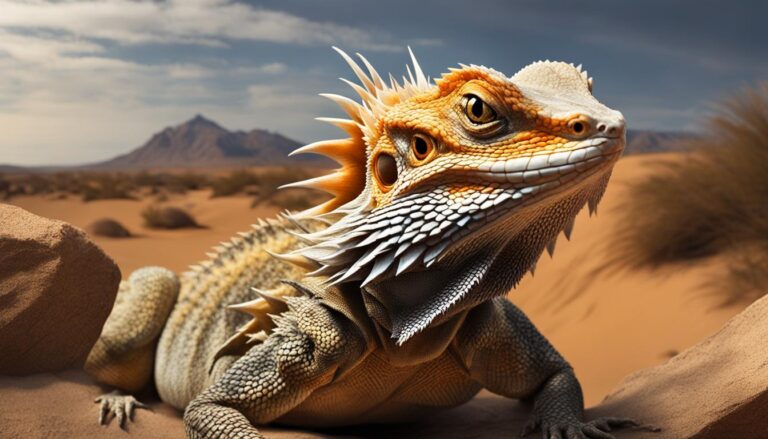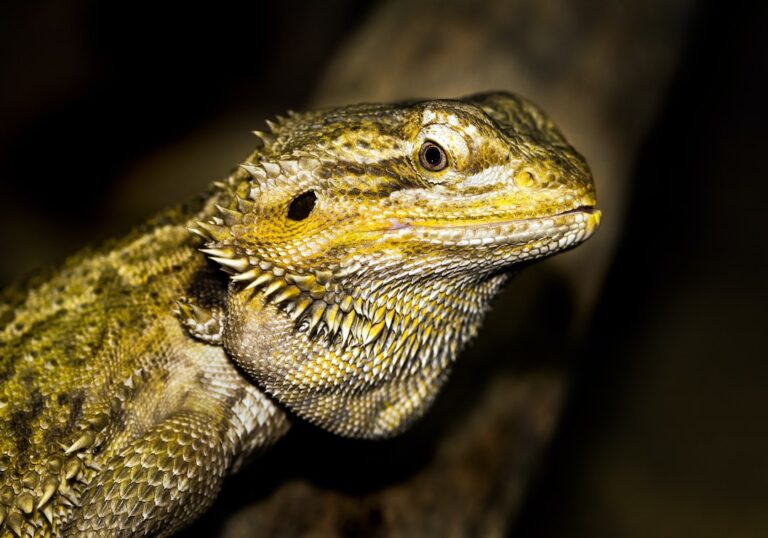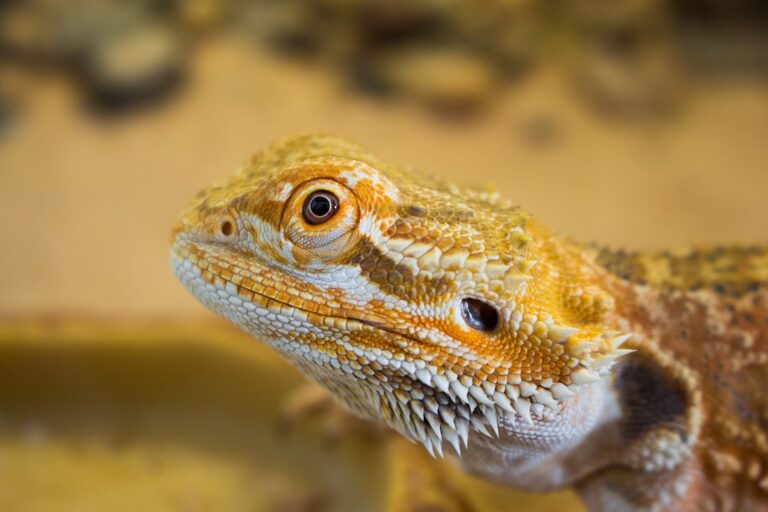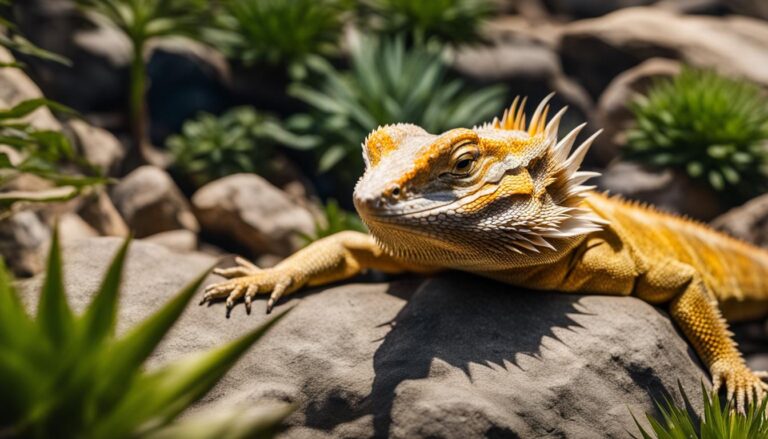Why Do Bearded Dragons Eat Their Babies?
Bearded dragons, also known as Pogona, are a type of lizard native to Australia. They have become increasingly popular as pets due to their unique appearance and relatively low maintenance requirements. Bearded dragons are known for their distinctive spiky beard and ability to change color. They are also known for their interesting reproductive behavior.
In the wild, bearded dragons typically breed during the spring and summer months. Males will engage in territorial displays to attract females, puffing out their beards and bobbing their heads. Once a female is receptive, mating will occur. After mating, the female will lay a clutch of eggs, which she will bury in a nest she has dug in the ground. The eggs will then incubate for several months before hatching.
Table of Contents
Understanding the Natural Instincts of Bearded Dragons
Bearded dragons have a number of natural instincts that impact their behavior. One of these instincts is their territorial nature. In the wild, bearded dragons will establish territories and defend them from other males. This territorial behavior can also be seen in captivity, where bearded dragons may become aggressive towards other dragons or even their human caretakers.
Another natural instinct of bearded dragons is their ability to change color. This behavior is often used as a form of communication. For example, a bearded dragon may darken its color to indicate aggression or fear, or it may lighten its color to show submission or relaxation.
The Role of Stress and Environmental Factors in Bearded Dragon Behavior
Stress and environmental factors can have a significant impact on the behavior of bearded dragons. These factors can include things like overcrowding, inadequate space, improper temperature and lighting, and poor nutrition.
Stress can lead to a variety of behavioral issues in bearded dragons, including aggression, lethargy, loss of appetite, and even illness. It is important for bearded dragon owners to provide a calm and comfortable environment for their pets to reduce stress.
To reduce stress in bearded dragons, it is important to provide them with adequate space and a proper habitat. This includes providing a large enough enclosure with plenty of hiding spots and climbing opportunities. It is also important to provide the proper temperature and lighting, as well as a varied and nutritious diet.
The Importance of Proper Nutrition and Feeding Habits for Bearded Dragons
Proper nutrition is essential for the health and well-being of bearded dragons. In the wild, bearded dragons are omnivorous, meaning they eat both plants and insects. In captivity, it is important to provide a balanced diet that includes a variety of vegetables, fruits, and insects.
Bearded dragons require a diet that is high in calcium and low in phosphorus. Calcium is essential for bone health, while phosphorus can interfere with calcium absorption. It is also important to provide a variety of foods to ensure that bearded dragons receive all the necessary nutrients.
Feeding habits can also impact the behavior of bearded dragons. Overfeeding can lead to obesity and other health issues, while underfeeding can lead to malnutrition. It is important to feed bearded dragons the appropriate amount of food based on their age, size, and activity level.
The Impact of Overcrowding and Lack of Space on Bearded Dragon Behavior
Overcrowding and lack of space can have a negative impact on the behavior of bearded dragons. In the wild, bearded dragons have large territories that they defend from other males. In captivity, it is important to provide enough space for each dragon to establish its own territory.
Overcrowding can lead to stress, aggression, and even cannibalism in bearded dragons. It is important to provide each dragon with its own enclosure or separate them into groups based on their compatibility. Each enclosure should be large enough to allow for adequate exercise and exploration.
The Role of Hormones and Territorial Behavior in Bearded Dragon Reproduction
Hormones play a crucial role in the reproductive behavior of bearded dragons. During the breeding season, male bearded dragons will produce higher levels of testosterone, which stimulates their territorial behavior and mating displays.
Territorial behavior is an important part of bearded dragon reproduction. Males will establish territories and defend them from other males in order to attract females. They will engage in head bobbing, beard puffing, and other displays to show their dominance and attract a mate.
The Significance of Temperature and Lighting in Bearded Dragon Breeding
Temperature and lighting are crucial factors in the breeding success of bearded dragons. Bearded dragons are ectothermic, meaning they rely on external sources of heat to regulate their body temperature. In order to breed successfully, they require specific temperature ranges.
During the breeding season, it is important to provide bearded dragons with a basking spot that reaches temperatures between 95-105°F (35-40°C). This allows them to raise their body temperature and stimulate their reproductive system.
Proper lighting is also important for bearded dragon breeding. Bearded dragons require UVB light in order to synthesize vitamin D3, which is necessary for calcium absorption. Without adequate UVB light, bearded dragons may become calcium deficient, which can lead to reproductive issues.
The Role of Genetics and Inbreeding in Bearded Dragon Behavior
Genetics play a significant role in the behavior of bearded dragons. Different genetic traits can impact things like temperament, coloration, and overall health. It is important for breeders to carefully select breeding pairs in order to produce healthy and well-adjusted offspring.
Inbreeding, or breeding closely related individuals, can have negative consequences for bearded dragon behavior and health. Inbreeding can increase the likelihood of genetic disorders and weaken the overall gene pool. It is important for breeders to avoid inbreeding and instead focus on maintaining genetic diversity.
The Importance of Early Intervention and Prevention of Cannibalism in Bearded Dragons
Cannibalism can occur in bearded dragons, particularly among hatchlings and juveniles. This behavior can be triggered by stress, overcrowding, or inadequate food supply. It is important for bearded dragon owners to intervene early to prevent cannibalism.
To prevent cannibalism, it is important to provide each hatchling or juvenile with its own enclosure. Each enclosure should have adequate hiding spots and enough food to prevent competition. It is also important to monitor the behavior of the dragons closely and separate any individuals that show signs of aggression.
Conclusion and Best Practices for Bearded Dragon Owners
In conclusion, understanding the behavior of bearded dragons is essential for their well-being and successful breeding. By providing a proper habitat, nutrition, and care, bearded dragon owners can ensure that their pets are healthy and happy.
Some best practices for bearded dragon owners include providing a spacious enclosure with plenty of hiding spots and climbing opportunities, offering a varied and nutritious diet, providing the proper temperature and lighting, avoiding inbreeding, and monitoring the behavior of their dragons closely.
By following these best practices, bearded dragon owners can create a safe and comfortable environment for their pets, allowing them to exhibit natural behaviors and thrive.
If you’re interested in reptiles, you may also want to check out this article on “Do Iguanas Blink?” It explores the fascinating behavior of iguanas and whether or not they have the ability to blink. Find out more about these intriguing creatures and their unique characteristics. Read more






